One of the key advantages agency marketers have over in-house teams is the vast number and variety of PPC accounts they see on a regular basis. Whether it’s doing proposals, paid audits, or sparring with co-workers, there are always plenty of accounts to review. This means we get to see a lot of common mistakes and weird strategies.
I thought it was time to put all that experience to good use and share the most damaging Google Ads mistakes I’ve seen in ecommerce accounts.
I want to start by saying that this is not the standard blog post where I’ll tell you to:
- Track your sales
- Use negative keywords
- Remember callout extensions
- Remarket to your shopping cart abandoners
Those areas have been covered extensively across the web and if you Google “Google Ads mistakes” these articles will be plastered throughout the first page.
Today, we’ll dig deeper into some of the more practical mistakes you might not have caught onto or, perhaps, didn’t realize were mistakes at all.
Overview
Keywords
- 1) Starting Campaigns with “Top of Funnel” Keywords
- 2) Ignoring Generic Keywords Because They’ll Convert “Low”
- 25) Not Covering The Entire Funnel With Keywords
Landing Pages
- 3) Not Utilizing Your Search Page As Your Primary Landing Pages
- 4) Not Utilizing the Sort/Filter Function as Part of Your Landing Page Testing
Shopping Ads
- 5) Using Your Standard Product Titles for Shopping Ads
- 6) Ignoring Your Shopping Ad Campaign Because It’s Performing Well
- 22) Not Utilizing Custom Labels in Shopping Campaigns
- 26) Submitting a Static Data Feed
Ad Writing
- 7) Not Using Tried and True Ad Text Phrases Known to Work
- 8) Feeling Promotions Are Too Time-Consuming to Run
- 9) Only Running Promotions Without Benchmark Ads
- 18) Not Using Countdown Ad Customizers
Optimization
- 10) Pausing Low-ROI Campaigns/Ad Groups/Keywords Without Reviewing Your Segments
- 11) Not Running Broad Match Because of “Best Practices”
- 12) Having a Set Budget, Despite The Fact That You’re Exceeding Your ROI Goals
- 13) Not Being Ruthless Enough When Doing Budget Allocation
- 14) Not Having a PPC Strategy for Your High Season / Holidays
- 15) Performing Ad Tests All The Way Through Your High Season
- 16) Having a Preconceived Notion of When Your High-Season Begins and Ends
- 17) Not Utilizing Google Ads Alerts to Steer Tasks Outside of the Optimization Schedule
Tracking
Campaign Structure
- 20) Not Splitting Up Campaigns in Mobile, Tablet, and Desktop
- 21) Not Utilizing Single-Keyword Ad Groups
Bid Management
- 23) Utilizing CPA as a Steering Force for Your Bid Management
- 24) Bid Management: Sticking to Manual Bidding Too Long
1) Starting Campaigns with “Top of Funnel” Keywords
A common mistake is starting your Google Ads with all the keywords you can find or thinking all keywords are created equal. Because, hey, you can just start all your keywords and then see which ones are converting, right? No need to think too much about which keywords you’re adding as long as they’re all relevant.
Unfortunately, it is slightly more complicated than this.
Granted, if you have an unlimited budget when starting your new campaigns, you’re more open to doing this. However, if you have a limited budget, this strategy is a huge mistake. See, if you spread yourself too thin in the beginning, it’ll take you longer to see which keywords are actually profitable. Let’s take an example from the running shoe industry – specifically, trail running (I’m a big Spartan Race fan).
The following categories of keywords are quite common:
- General: Running Shoes
- Brand: Nike running shoes
- Category: Trail running shoes
- Brand+Category: Nike trail running shoes
- Brand+Series: Nike air zoom running shoes
- Product: Nike air zoom wildhorse 3 running shoes
Instead of targeting all the keywords, try this.
Focus Your Initial Budget on Keywords That Are The Most Likely to Convert
Let’s say you’re starting a new campaign and spread your limited budget across all these keywords. What you’ll quickly see is that the keywords running shoes and nike running shoes will run off with the majority (80%) of all your clicks. I can tell you off the top of my head that those two keywords are the lowest converting terms that you’ll find. Most keywords will convert in the following order (ranging from lowest to highest)
- Running shoes
- Nike running shoes
- Nike trail running shoes
- Nike air zoom running shoes
- Nike air zoom wildhorse 3 running shoes
Let’s pretend we run a new campaign with all these keywords. The results you’ll most likely see are the following:
In this example, we’re seeing that running shoes and nike running shoes are grabbing 80% of the costs, but only 35% of the conversions. At the same time, 20% of your costs are accounting for 65% of your conversions.
Let’s try to do the same example, but you only start off with the bottom 3 keyword categories:
Takeaways From Changing To The 3 Bottom Keyword Categories:
- You received fewer clicks because you’re now getting your clicks from more expensive keywords.
- You almost doubled the amount of conversions because you focused your clicks on keywords with a higher likelihood of converting.
- Your CPA decreased by almost 50%.
This is something I have seen time and time again from the accounts I have audited over the years.
Get your campaigns off to the right start by choosing the keywords that more likely to convert.
2) Ignoring Generic Keywords Because They’ll Convert “Low”
Just as you can waste money by targeting all keywords, on the other end of the spectrum, you can waste money by targeting too few keywords.
Once your campaign has proven to be profitable, it’s time to expand. Too often I see ecommerce advertisers stick to the same keywords they started their account with and rarely expanding into the big keywords that can really move the needle.
The key is to treat your general keywords differently from your product-keywords.
A product keyword like Nike Air Zoom Wildhorse 3 will attract someone who already knows what they want to buy. These will convert a lot, but have a relative low volume of searches, and therefore limited impact on your business as your business grows.
A category keyword like Nike running shoes will attract people who don’t yet know what kind of running shoe they’re looking for. They will most likely not convert the first time they click on your ad.
You shouldn’t expect a category-keyword to perform the same way that a product-keyword performs.
A category-keyword should be reviewed for further performance parameters:
- Fuel for your remarketing audience
- First-click attribution analysis
If you can get your category-keyword to just break even, or result in a small profit, then you’ll most likely be able to justify it.
It does require that you have a strong remarketing strategy across both Display, RLSA, and Facebook in order for this to make sense. Furthermore, you need to treat all these channels as a whole. If you’re doing remarketing on Facebook, then you need to share parts of the costs associated with your category keywords.
Furthermore, you need to perform an attribution analysis beyond just last-click to ensure that your category keywords are actually producing results.
3) Not Utilizing Your Search Page As Your Primary Landing Pages
As a searcher, one of the more frustrating experiences is when I click on a beautiful ad mentioning gift baskets full of my favorite nuts, just to arrive at a random category:
Sure, I can take some time to find the gift baskets that only contain nuts, and in some instances, I would. But that’s not what I was looking for!
During my years as a consultant, I’ve learned I can’t tell a client to create a custom landing page every time I want to deeplink a keyword or create a new ad group. I often want to prove there is search volume before asking clients to put in the time to create a custom landing page. And then there are the many clients that simply can’t create custom landing pages.
The solution is very simple: Use the search page.
For some of my larger clients, we actually decided to create a standalone “search page” for me to use when needing landing pages. Here is why this strategy is so effective.
Allows for Extreme Deep Linking
One of the biggest opportunities you’ll find is the ability to do deeplinking at scale. Most search pages look like this:
XYZ-Shop.com/search/?s=search+query
It shouldn’t take you long to figure out that you can populate the search+query with your keywords automatically using search and replace, Excel, or whatever your favorite tool is.
I usually use the ad group name as the search query. It’s sufficiently broad and rarely includes adjectives. If you use a specific naming convention, just start your campaigns without your naming convention and then add the convention after you’ve dynamically replaced search+query.
Just remember to check that your landing page actually works. This can be done with a simple Google Ads script that looks for words like “No Results” on the landing page.
4) Not Utilizing the Sort/Filter Function as Part of Your Landing Page Testing
It never ceases to amaze me how little thought some ecommerce stores put into the order of their products in their category pages.
I’ve seen the default be anything from newest to alphabetical to price. You rarely want to show the most expensive, or even the cheapest products first. Similarly, then I don’t want to show Adidas before Rebook for CrossFit shoes when Reebok’s product line sells much better.
A quick tip is to utilize the sorting function that most landing pages come with.
I usually use Most Popular or Newest, depending on what I’m selling. If I’m selling apparel I almost always go for newest. If I’m selling gift baskets, I’ll take Most Popular any day of the week.
The ultimate is, of course, for the ecommerce store to create a custom view and include a mix of the following view:
- Most popular
- Newest models
- Current promotions
Bonus Tip: I also recommend differentiating between keywords. Let’s say you run a keyword like cheap gift baskets. I’ll run a test with sorting the lowest priced gift baskets and see what the ROAS is for these. You might be surprised.
5) Using Your Standard Product Titles for Shopping Ads
It’s rare for an ecommerce store to have optimized titles as the default export to their data feed.
You’ll most often find titles like:
- Convenient Tablet Tote
- Clear Power Bank
- Zoom Stand for Tablets
These titles are taken from an actual merchandise website. In this situation, we’re actively not looking to pay for clicks on generic searches like power bank, tablet stand and tablet tote. People looking for a power bank are not interested in buying 140 power banks with a logo on it.
What we need to do is add more keywords to our product titles, which will enable us to show up for the right search terms:
- Convenient Tablet Tote with logo
- Imprinted Clear Power Bank
- Promotional Zoom Stand for Tablets
The value of this can be absolutely monumental:
Crealytics did an excellent study on the subject and found that the biggest impact you can have in your Shopping feed is optimizing your titles. Nothing else comes close.
I recommend using a tool like DataFeedWatch (beginners), GoDataFeed (more advanced) and Feedonomics (hands-off) to create these general rewrite rules for your feed.
6) Ignoring Your Shopping Ad Campaign Because It’s Performing Well
I’ve seen a lot of advertisers more or less ignoring their Shopping campaigns because it doesn’t fit into their regular optimization habits or because it’s performing well.
Shopping campaigns work well because of three primary factors:
- Many search queries are very specific to the individual product
- The price, reviews, promotions and product image pre-qualifies the searcher when they click on the ad
- The landing page shows exactly what was promised in the ad
All of these are automatic, and you don’t have to do anything in order to get results.
But that doesn’t mean there isn’t any work to do. In the example from the tip above, the store was actually doing great in Shopping. They had an ROAS of 9x and generated more than $20,000 in revenue from Shopping Ads per month. The challenge as I reviewed it was that the Shopping campaign only accounted for 5.5% of the entire ad spend and 4.8% of the revenue in the account.
I thought this was weird because for most ecommerce accounts, Shopping campaigns account for 20-50% of the spend/revenue, depending on their level of expansion into Display and what industry they’re in.
Once we did a quick rewrite rule, where we added the category name from the website to the beginning of the title and the brand to the end of the title, our traffic shot up 389%.
7) Not Using Tried and True Ad Text Phrases Known to Work
Especially with Expanded Text Ads, there are a lot of inclinations to go into full-on essay mode when writing ads.
I’ve lately seen everything from:
Today we have the best offers on beds. Check our most popular offers now!
to
We are having the best sale of the year, so if you buy now you’ll save a lot!
People still only scan ads on Google. Expanded Text Ads haven’t changed that.
In one of the #PPCchats on Twitter, several PPC managers touted the death of the description line, as its content hadn’t made any impact when they ran tests. An alternative takeaway from this is that people simply don’t read the ads, they scan them. Makes sense, right?
So stick to tried and true ad texts. Especially when you’re starting out. You should always be testing and trying radical things, but don’t test radical against radical. A bit of best practice goes a long way:
- Buy Now/Today/Online
- Free Shipping
- Free Returns
- Save XX% on XYZ product
- Three days left in XYZ promotion
This will help you get a baseline you can then test against.
8) Feeling Promotions Are Too Time-Consuming to Run
I used to think running product-specific promotional ads was cumbersome, inefficient, and would ultimately impede me from getting statistically significant ad testing data.
That was until I ran into one of my early clients, who had a very strong promotional strategy. They would plan promotions well in advance and they were well-thought out.
Guess what – the promotion ads worked incredibly well!
And with the addition of countdown ads, the results from running promotional ads have been even greater.
Go to the overview
9) Only Running Promotions Without Benchmark Ads
At the other end of the spectrum, I also see ecommerce advertisers only running promotional ads. This means that whenever they stop a promotion, you’ll have a massive drop in sales, your CPA will go up, and ROAS go down.
In order to counteract this I frequently run the promotional and (what I call) year-round ads side-by-side. This serves two purposes:
- I’m know my promotional ads perform better than a generic ad
- When the promotion ends, I can fall back on solid ads
This doesn’t mean you should never run promotional ads alone. There are definitely times, like around big holidays or big promotions, where the added revenue is too much to miss – just don’t let it be your default.
Bonus tip: I often take successful phrases from my year-round ads and implement them in my promotional ads. I’m forced to be creative in my year-round ads, as they don’t have a 50% off or another promotion doing the converting for them.
10) Pausing Low-ROI Campaigns/Ad Groups/Keywords Without Reviewing Your Segments
If I had a dollar for every time a keyword was paused due to low ROI caused by mobile, then I’d be a rich man!
The first time I really had my eyes opened to segmentation was during a keynote by Brad Geddes on ad testing. He brought up an excellent case for why you should be segmenting your ad testing per device. It all came down to the big discrepancy you often see across different devices.
How well your store performs on mobile devices depends on a number of factors:
- Your website’s mobile friendliness
- Product fit to purchase from a mobile
- Typical buying funnel
- Number of repeat customers (repeat = account = simple checkout)
As an example, think about a large purchase, like a bed. You’ll rarely buy a bed from a mobile device. On the other hand, an ebook, headphones, gym accessories, etc. are bought just as much through mobile devices as desktops.
If you’re not separating your mobile devices into separate campaigns, you should always review your mobile device segment prior to doing anything drastic.
The saddest thing in PPC is keywords being paused despite driving relevant traffic and conversions, just because it has a low ROI on mobile.
Go to the overview
11) Not Running Broad Match Because of “Best Practices”
If you were to stop certain practices because you wanted to follow all the best practices, then you’d end up with an empty shell of an Google Ads account.
I could point to four different PPC managers I respect and we’d each be able to propose a different practice for how to structure campaigns, write ads, or use match types. Just because someone else does it differently or there is a “best practice” against a strategy doesn’t mean it can’t be effective in your situation.
One of those best practices you can ignore under the right circumstances is the one for never using broad match keywords. There are plenty of successful tactics to run a broad match keyword:
- Pair the keyword with an RLSA audience
- Add extensive exact match and broad match negative keywords to counteract the searches you don’t want to appear for
- Use a conservative bid (50% of your exact match bid – tops)
- Aim to review search terms at least weekly – preferably more often in the beginning
If your website is converting well, then you can run carefully selected broad match keywords using the tactics above. Broad match can be an excellent keyword research method.
12) Having a Set Budget, Despite The Fact That You’re Exceeding Your ROI Goals
With the ability to track ROI in Google Ads, you’d think that more people would implement the practice of unlimited budgets.
For many executives in large companies this is a frightening thought. How can we control expenses if we just give our marketing team an unlimited budget?! And yeah, they might be right and yes, some companies will not be able to implement this.
But if you’re more nimble, then this is a great tactic.
If you’re showing a positive ROI, you should allow your marketing team to run as much spend through Google Ads as long as they remain showing a positive ROI (within your cashflow limits, of course).
13) Not Being Ruthless Enough When Doing Budget Allocation
In the example of starting your campaign off right, we briefly touched upon the subject of budget allocation. If you’re working with a finite budget, then it’s crucial that you focus on budget allocation.
You need to allocate budget to the campaigns that will drive the biggest ROAS for you.
Let’s say you’re running three campaigns and they’re limited by budget:
We’re seeing 315 conversions out of a spend of $15,350. By allocating more budget towards campaign 1 and 2 , we’d be able to increase performance without doing anything:
That’s an increase in conversions by 149% and a decrease in cost by 14%. And you essentially didn’t do anything. No ad writing, no keyword research – you just switched around a couple of numbers. Not bad for a few minutes’ worth of work.
I see this all the time, and it’s scary effective!
Go to the overview
14) Not Having a PPC Strategy for Your High Season / Holidays
A lot of ecommerce advertisers out there have a strong promotional strategy for when they hit their high seasons. They know exactly what products to promote, how to hit them with email marketing, and what new categories to add to the website.
One of the more competitive seasonal businesses out there is gift baskets. Sales volumes fluctuate wildly during the various holidays. Unlike the toys industry, which sees a big influx at Christmas, you’ll see big spikes around secretaries day, bosses day, and other days that celebrate XYZ thing.
Most advertisers, however do not create more than a couple of new ads for their high season – at best – and otherwise maintain regular management of their campaigns.
If that’s not wasting a golden opportunity, then I don’t know what is. Taking advantage of your high season should be a key strategy, you need to put extra effort into this.
The tactics below are the areas I typically invest most of my time in to get success during a high-season or holiday:
- Add Broad Match (not just BMM) keywords
- Reactivate previous high season keywords
- Add countdown counters to your ads
- Increase your budget, significantly
- Increase your bids, significantly
- Boost your Dynamic Display Remarketing
- Activate or boost your Dynamic Search Ads
- Increase optimization frequency
Allow me to elaborate slightly for each area below.
Add Broad Match (not just BMM) Keywords
During a high season, conversion rates and ROI goes through the roof. My most well-known example is a toy company I used to manage campaigns for. We would put a high bid for the broad match term toys – yes, TOYS! It produced a 9x return every year.
Granted, we had a done a lot of work throughout the year to make it profitable and had extensive negative keyword lists, frequent search term mining, and ad group expansion. We put a lot of work in there, but it also paid off big time.
Reactivate Previous High Season Keywords
Along the same lines, then one of the biggest missed opportunities I see is ecommerce advertisers who don’t reactivate high-traffic keywords that they’ve previously paused due to low performance.
During your high season you’ll convert better, so let’s give these relevant keywords a try again. For the very least, add them with an RLSA audience.
Add a Countdown Counter to Your Ads
Just do it. It sets your ads apart, boosts CTR and really increases your conversion rate during the last days.
Increase Your Budget, Significantly
Depending on your industry and the season,you should aim to at least add 50% to your budget and, hopefully, two to three times your regular budget.
Increase Your Bids, Significantly
Conversions rates are higher, so you can increase your bids to get a bigger piece of the pie – it’ll be worth it.
This doesn’t just go for the bids that you see for your keywords, but also includes all bid adjustments:
- Revise your ad schedule; should you expand the hours/days your campaign runs?
- Revise your ad schedule bid adjustments
- Revise your device bid adjustments
- Boost your dynamic display remarketing
Activate or Boost Your Dynamic Search Ads
Dynamic Search Ads are crucial during a high season or the holidays. They capture brand new searches, create keyword-level deeplinking and dynamically setup relevant ads.
During a high season, your Dynamic Search Ads should get as much power as your budget allows. Not only will it allow you to cover a much bigger part of your inventory, but you’ll also discover items in your inventory that all of a sudden start getting search volume.
Over the years, I have seen the weirdest products start gaining traction. One year, a kitchen accessories’ (5,000 SKUs) company all of a sudden started selling tens of these special tea infusers per day. There had NEVER been search volume for these before, and the stock was quickly sold out.
However, the ecommerce store quickly restocked, and we continued to sell in the low hundreds per day. After we created its own campaign, we lowered the CPA for these items by 52% and increased the CTR by 120%.
If it hadn’t been for the DSA campaign, we would never have been featured in Google for this item and we’d never known it would start selling well during this holiday.
Note: It’s important that you start your DSA campaign at least 7 days before your season starts. This is especially true if it’s a short season like Valentine’s Day or Thanksgiving. DSA campaigns take some time to get going.
For more tips on Dynamic Search Ads I recommend our article:
Dynamic Search Ads for eCommerce: The Easy-to-Understand Guide to 20% Added Revenue
Increase Optimization Frequency
More money spent means more clicks/conversions received, which means you need to pay more attention.
Your budget can be spent up by broad match keyword, low performing ads, wrong bidding, etc. Keep an eye on things – at least daily during ultra high seasons – regularly.
Not Having a Post-Season Strategy
My last piece of advice is to also have a post-season strategy. I can’t say how many times I’ve seen a retailer have a successful Christmas season just to see 10-40% of their profits get eaten up during January while they’re “tweaking” to the new norms:
- Bids need to be adjusted down
- Broad match keywords needs to be paused
- “Reactivated” keywords need to back to slumber
- Pause holiday-specific ads
To help you do all this, I recommend labeling anything you activated just for the holiday season. This will make it much easier to deactivate or adjust bids again afterwards. Keep track and you’ll do much better
15) Performing Ad Tests All The Way Through Your High Season
A common mistake I see ecommerce advertisers make is performing ad tests all the way through their high season.
Ads are being tested, experiments set live, etc.
Now, don’t get me wrong. You should definitely test during your high season. And if you keep improving upon your current best-performing ads, then continue testing.
But if you find yourself running out of ideas and start seeing multiple losing ad tests, then it might be time to call it quits and reap the benefits of your successful ads.
Go to the overview
16) Having a Preconceived Notion of When Your High-Season Begins and Ends
I still remember to this day sitting in a meeting before Christmas in 2010 where a client told me he wanted me to pause his campaigns on Christmas Day, but I told him that people WILL search and convert for what they didn’t get.
It worked. We sold very well!
The season was technically over, but his product was a niche electronics product. I had personally put it on my wish list as well and I had a feeling that not many people would actually go out and buy it, but it was right in the price range for gifts.
So, on Christmas Day we had an excellent sales day and we continued this up until a couple of days before New Year’s.
Go to the overview
17) Not Utilizing Google Ads Alerts to Steer Tasks Outside of the Optimization Schedule
I’m a huge fan of processes, schedules, and checklists. It’s been one of my “not-so-secret” secret tools for getting to where I am today. Once you set everything up in a schedule with set processes it frees you to really focus on what you do while ignoring everything that goes on outside your current task.
For Google Ads, though, it can become a challenge. Let’s say you’re doing weekly optimizations and something you set up on a Thursday crashes. You started new promotion ads for the weekend and they were all disapproved due to a spelling error in your URL. It happens.
Now, on Monday you go into pause your promotion ads and, to your horror, you realize NONE of them ran all weekend due to them being disapproved.
This is where custom alerts come into place. Above is just one example, but it can be anything.
The KEY to these alerts is that you build them in such a way that you only receive the alerts when something bad happens. Too often, I see alerts that are “Today, nothing happened”. Well, when I get that alert 40 times in a row then I’ll start ignoring it.
You can do this through two ways:
- Build your own Google Ads Script that only sends the alerts when it actually happens
- Filter out “empty” alerts
I also frequently use Zapier and IFTTT recipes to automatically take email alerts and add them to my task manager or the project management tool we use in SavvyRevenue.
18) Not Using Countdown Ad Customizers
If you haven’t taken advantage of countdown ad customizers yet, then you’re in for a treat.
The first time I used them I was staring at this account feeling burnt out on my 4th year of managing it. In that moment, I didn’t know what to do next. Then I looked through my “scrapbook” of ideas for optimizations (btw, everyone should keep such a list) and saw ad countdown customizers. DUH! How come I didn’t think of this.
Needless to say, I was so excited about the prospect that I spent the next four hours glued to the computer updating ads for all 52 campaigns. Normally, you shouldn’t launch new ads across your entire account from one day to another (what if they suck?), so I opted to launch 10% of them in my highest volume ad groups. A week later, Christmas unfolded and performance was higher.
The remaining 45 campaigns had their new ads launched.
Performance increased.
Happy Google Ads guy. Happy client.
I suggest you try it.
Go to the overview
19) Ignoring Attribution Models
If there was ever an area that has been more or less ignored by regular ecommerce advertisers over the last years, its attribution modeling.
To make my point, have you ever considered changing the default attribution model in Google Ads?
Just click save. I dare you 🙂
No, it’s a big decision to make and if your company is of any size, then it’s not necessarily a decision you can make by yourself. And getting buy-in from non-believers can be incredibly difficult.
But, it’s important that you at least consider attribution modeling when you’re working with Google Ads (and online marketing, in general).
The best way to do this is in Google Analytics where you can compare your performance in Google Ads (or across channels) using different attribution models.
Go to Analytics –> Conversions –> Attribution –> Model Comparison Tool:
You might be surprised at how big of an impact choosing a different attribution model will have:
In this, I’m sharing just two campaigns using the position based attribution model (on the right) compared to the default last click model.
These two campaigns have general keywords like beds, buy bed online, continental bed, etc.
Both campaigns doubled in attributed conversion value when reviewing their performance using the position based model. The Position-Based attribution model is weighed in the following manner:
The campaigns doubled their attributed revenue by only changing the attribution model from last click to position-based. Note, that we didn’t even go to 100% first click attribution. A full 40% of the revenue was still focused on the last interaction/click, so there must have been a lot of revenue that originally stemmed from these campaigns that weren’t tracking yet.
The same pattern was seen across the other attribution models.
I recommend you at least review your current campaigns and advertising efforts using the following comparisons:
- Last Click vs First Click
- Last Click vs Position Based
- Last Click vs Time Decay
Attribution Models Don’t Have To Be Set In Stone
Amy Bishop wrote a great article on why attribution modeling isn’t a question of what model to use, but rather a question of when to use what model: Choosing an attribution model: When, not which.
I highly recommend reading Amy’s excellent post on the matter. It will help open your eyes to the different attribution models and the question of when, not how.
But, you should probably still change the last-click attribution model in Google Ads. For most ecommerce stores (that aren’t in the beginning phases), I recommend Position-Based. It’s not perfect (none of them are), but it’ll help you gain insights to the crucial early stage keywords as well as keep 40% of your weight on the keywords that are clicked right before a sale happens.
20) Not Splitting Up Campaigns in Mobile, Tablet, and Desktop
With the onset of Enhanced Campaigns back in 2013 all PPC managers were forced to implement a mindset of “it’ll be alright” when it came to having mobile, tablets, and desktops in the same campaign. Heck, we couldn’t even change the tablet bid.
I can’t tell you how many times I’ve looked at a graph like this and cried a bit over my lack of ability to change the tablet bid:
Splitting Campaigns Are Back! But I’m Scared
When the ability to split campaigns up per device came back, I found myself caught in doubt. After having spent three years running campaigns that couldn’t be split, all of us had a decision to make: Do we go back to our old ways or do we stick to our current account/campaign structure?
For me, at least, the thought process was the following:
- Do I have to split up campaigns? I haven’t for three years and we’re doing fine.
- WHY is mobile always doing so bad?
- OMG, I wish I could do something about this tablet stuff!
- NOOO! They took away mobile-preferred ads. I need to do something.
- Wait, I can split up campaigns again, but should I?
- Hmm. What if I just split out my mobile campaigns in my biggest campaigns?
- No, tablets are doing just as bad for this client. Let’s break it into three.
….
And the rest is history. The first time I split out a campaign again after it was made possible I had this weird feeling. Like when your best friend offers to pay for dinner out of the blue, or your boss tells you that you can leave early on a Friday. It felt good, but still – what’s the catch?
The truth is, there is no catch. You need to break up your campaigns into three different campaigns. At least do it for your top 20% campaigns and as needed for performance purposes.
I loved Aaron Levy’s article on “Should You Create Device-Specific PPC Campaigns“.
He very politely goes out saying that it’s your own choice, but that you should definitely do it.
Go to the overview
21) Not Utilizing Single-Keyword Ad Groups
Single-keyword ad groups create quite a bit of conflict in the PPC world.
The truth is, both those all for and all against are wrong. It’s not effective to only do SKAGs, and it’s certainly not effective to not do SKAGS. The key is finding a middle-ground.
The best approach for people starting out with single-keyword ad groups is to find the keywords that produce the most clicks and conversions and create single-keyword ad groups for these keywords.
The reason why it’s important that you find keywords that produce the most clicks or conversions is due to your ability to increase a keyword’s efficiency. Let’s say that you have a keyword that’s not converting that well, but has a lot of clicks. By taking this keyword from its “mixed” ad group to it’s single-keyword-ad-group (SKAG) you’ll most likely be able to optimize its efficiency.
Remember to keep some of the common best practices in mind when moving keywords:
- If possible, move the exact match keyword out of the ad group rather than the BMM/Phrase keyword. They often take time to reach previous performance.
- Duplicate any negative keywords that the old ad group/campaign has.
- Use the same bid as previously.
- Reuse at least one of the ads in the previous ad group.
Doing Single-Keyword Ad Groups For The Sake Of Single-Keyword Ad Groups Is Ridiculous
I’ve met some marketers who believe that single-keyword ad groups are the only way to build campaigns. Even though I agree this is an effective approach whenever we’re dealing with larger, primary keywords, running SKAGs account-wide can have detrimental effects on your account performance if you do it without a solid strategy.
This is due to two obstacles:
- Your inability to test ads for low-volume keywords
- Your inability to effectively manage your campaigns
Note, the reason for not running SKAGs exclusively isn’t due to their lack of effectiveness. It’s a question of practicality.
22) Not Utilizing Custom Labels in Shopping Campaigns
Custom Labels are a great way to better structure your shopping campaigns.
A couple of ways to segment your shopping campaigns can be:
- Based on Price
- Active Promotions
- Most Popular
Example of Using a “Most Popular” Custom Label
Let’s say that you’re selling beds and in your data feed for Shopping you include all the sizes you have available:
- Twin: 38″ x 74″
- Twin Extra Long (XL): 38″ x 80″
- Full: 54″ x 74″
- Queen: 60″ x 80″
- King: 76″ x 80″
- California King: 72″ x 84″
This is great stuff for a Shopping campaign. It’s exactly what they were designed to do – match very specific searches with exactly what the searcher is looking for.
But what if the searchers simple inputs best beds or buy bed online. What product should you choose to show?
If you let Google decide, then they’ll rotate the products until they find a winner based on CTR. But then it might be too late and you have burned through a lot of budget.
The solution is to use a custom label named Most Popular (you can name it in whichever way you want) that you apply to the most popular size. In this case, let’s say King Size beds are the most popular models. We’ll apply the Most Popular custom label to all King Size models.
Then you create two campaigns:
- Most Popular Sizes
- Everything else
In the Most Popular Sizes campaign, you create a product filter based on the custom label Most Popular. The Most Popular Sizes campaigns gets the high priority and the Everything Else gets a normal priority. You can take this one step further and apply your most popular keywords as exact match negatives in the Everything Else campaign.
This is a simple version of just one way you can ensure that your shopping campaigns show your most popular products for generic searches thereby given you the best chances of having a high CTR and converting searchers.
23) Utilizing CPA as a Steering Force for Your Bid Management
I haven’t used CPA bidding for an ecommerce store since 2012 (I think). This is partly because it’s highly inefficient, but it also has something to do with the fact that most ecommerce stores are now able to either track revenue directly in Google Analytics or in Google Ads through valuetrack. Believe it or not, it was a lot less common back in 2012.
Another reason is because I simply don’t take clients in that don’t have the option to track revenue for their marketing efforts. That’s how big of a deal it is when I say that CPA bidding for ecommerce is dead.
Tracking a CPA target for an ecommerce store is only useful in the cases where the ecommerce store isn’t really a retailer, but is more like a SaaS business where the focus is to get users/customers in the door. They’ll put a high lifetime value on the customer, so they initially don’t care what revenue they bring. They’ll make up the bulk of their profit on the repeat purchases. This can be even more common with brands that have their own store rather than the “superstore” that brings various brands in.
The Challenge with CPA Bidding Is In Its Disregard for Value Creation
When you’re bidding based on a fixed cost per acquisition/conversion, you’re basically measuring that every keyword will bring the same average revenue per transaction. Yes, in Google Analytics, you’ll be able to see your average order value from Google Ads, but if you steer all your bid management based on this, you’ll likely overpay for some conversions and miss out on conversions you should have had.
Let’s say that your average order value is $100. However, in reality it looks like this:
- Campaign A brings 50 conversions at $100 CPA ($50 order value)
- Campaign B brings in 50 conversions at $100 CPA ($150 order value)
In total, 100 conversions at $100 cost per conversion. Total cost, $10,000 and revenue of $10,000.
You’re, on paper, breaking even.
But let’s say that you implemented differentiated bidding and started looking at ROAS.
- Campaign Z has an ROAS of 50%
- Campaign Y has an ROAs of 150%
After applying differentiated bidding based on an ROAS target, we were able to get the following results:
- Campaign Z: 25 conversions at $50 cost per conversion.
- Campaign Y: 75 conversions at $125 cost per conversion.
Total of 100 conversions – same as before – but instead of $10,000 in revenue we achieved $12,500 in revenue and $10,625. An ROAS of 1.17 rather than 1.
Granted, these are made-up numbers and is just a simple example. The power behind ROAS/ROI-based bidding is very strong and should be your primary bidding strategy.
Go to the overview
24) Bid Management: Sticking to Manual Bidding Too Long
One of my biggest regrets in PPC was being very late to the game when it came to automated bid management. I didn’t start using it until ~2012/2013. And it wasn’t because I felt I wanted to. I simply didn’t have any choice. I was overwhelmed with work and couldn’t keep up with managing bids manually, so I applied automated bid management based on ROAS from Google and saw my ROAS increase – across the board.
From then on, I’ve primarily used automated bid management for accounts after they’ve gained traction.
When starting automated bid management it’s important that your remember:
- It’s not an end-all solution. You still need to manage it.
- No matter how great automated bidding is, then it can’t fix bad ads, keywords or businesses. It’s not a magic tool for success.
- Give it 30 days to just acclimate. This means that the target ROAS you give the bidding tool should be the same as you’ve been averaging the last 30 days (depending on seasonality).
- Don’t apply it during a holiday or other high/low seasons.
BIG BUT; If You Have Large-Ticket Items, Stick to Manual Bidding
I haven’t seen a bidding system that has been able to successfully work with longer buying cycles or big ticket items. When you’re dealing with big ticket items (+$2,000 sales price) you can easily go days where a pricey keywords doesn’t convert.
I’ve seen individual keywords go a week without converting, racking up $2,000 in spend before it then brings 3-4 conversions in one or two days. That’s $8,000 (or more) in revenue and a healthy ROAS.
Without fail, the systems I’ve seen have all lowered spend on keywords like these before they had a chance to convert.
This means if you really want to use automated bidding, you have two options:
- Apply very strict minimum bids (the system will not be able to bid lower than you allow it to). However, this limits its ability to manage your bidding and you’ll really need to review it further yourself for whether you want it to be “paused”.
- Manually override bidding gone wrong: This is very time-consuming and in larger accounts it’s almost impossible to keep track of.
Therefore, for big ticket items, I stick to manual bidding for most accounts, but will use Enhanced CPC to help me out.
25) Not Covering The Entire Funnel With Keywords
A lot of advertisers are automatically skewed towards using keywords that “appear” to be driving revenue. The application of all the revenue to the last keyword/ad that a consumer clicks is unwittingly pushing advertisers to defocus keywords that are contributing to searches earlier in the search funnel.
As Larry Kim excellently pointed out in his article, Attention search marketers: ALL keywords are branded keywords!, people that have an affinity for your brand is more likely to choose you when they make their “final” search before purchasing.
This means that if you capture a consumer early on through top-of-the-funnel keywords, then you’re more likely to convert consumers when they search for bottom-of-the-funnel keywords later on.
Or, in other words, if a consumer clicked your ad after searching for trail running shoes (top of funnel), then they’re more likely to click your ad after searching for Nike Air Zoom Wildhorse 3 prices (bottom of funnel).
Top of Funnel Keywords Can Also Be Revenue Drivers
Even though you should run top of funnel keywords because they help drive bottom of funnel performance, then they can also drive a lot of direct revenue themselves. You just have to review them differently.
Let’s say you have an account target of 3x return on ad spend. Your bottom of funnel keywords are all running at 4x ROAS and you’re happy.
You then start a keyword like trail running shoes and it’s converting a 2x ROAS. This might not be something you should turn off, or decrease the bid for, just yet. If it’s a big enough keyword then a 2x ROAS will mean that it drives a ton of traffic and sales – even at such a low ROAS.
Even though you’re losing money on it, you’ll be able to make it back through the repeat purchasers as well as remarketing to people who didn’t convert directly.
Plus, you’re introducing brand new people to your brand.
26) Submitting a Static Data Feed
Over the years, I’ve seen a lot of wasted time working with Google Ads, but nothing comes close to managing static data feeds.
If you have created your data feed for Shopping Ads manually (i.e. opened the Excel template and inputted prices, products, links, etc.) then you’re wasting your time. This goes just as well for people who are exporting their data feed, manually rewriting titles, categories, etc. and then uploading it to the Merchant Center.
It’s an absolute waste of time and more likely to result in low behind-the-scenes quality scores, disapproved products, and poor performance.
Google is very aggressive on incorrect data feeds. If your data feed is showing one price and your website shows another, then your product will be disapproved and will not show up in Shopping ads. If you have the wrong shipping info, your entire merchant center can be disapproved.
At the time of writing this, Google only reviews merchant center submissions once a week. In my worst example, a client who ran their own merchant center took three weeks to get their shopping ads started again due to improper shipping prices. It was all caused by three products that were particularly heavy, so they were exempt from the standard pricing they had submitted. It wasn’t until I got involved after the second disapproval that we caught it. But by that time, the damage had already been done.
Don’t get caught with a stale Shopping feed!
I highly recommend using tools like DataFeedWatch (I use this), Feedonomics, Feeditor, or GoDataFeed depending on your needs.
Download The Checklist and Review Your Account
Phew. That was a long one. A bit shy of 8,000 words.
Now that you’re through it all, I want to recommend three actions you can take right away to help your Google Ads account perform better. Build the rest into your optimization schedule:
- Action 1: Add countdown ads to your top five traffic-generating ad groups that have promotions
- Action 2: Segment your top two campaigns in mobile, tablet, and desktop
- Action 3: Change the sorting on your category landing pages to bestseller
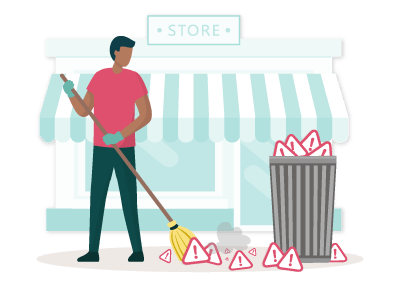
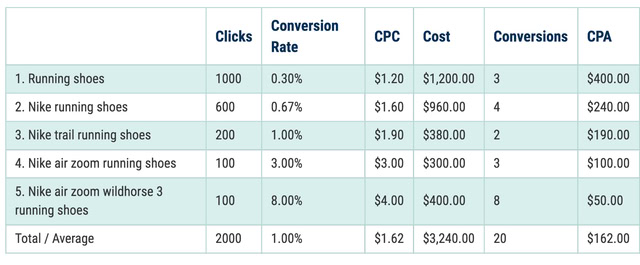






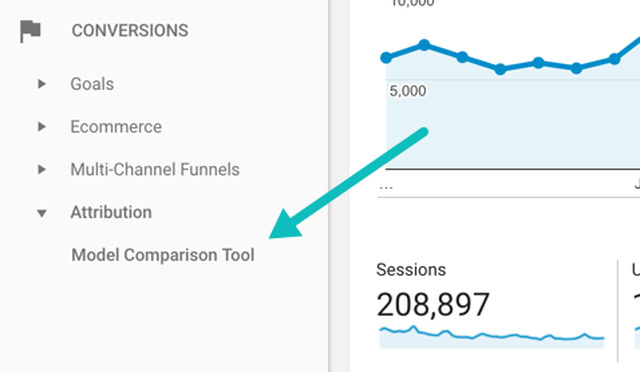

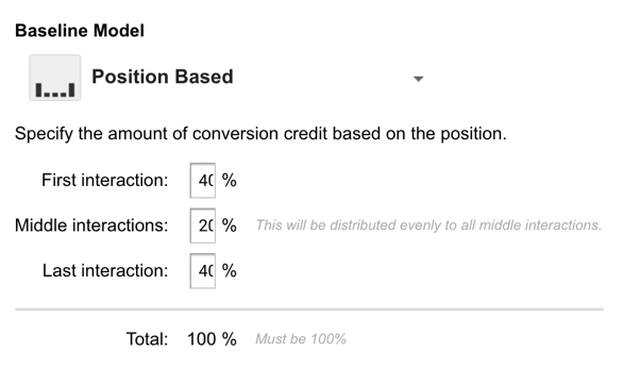

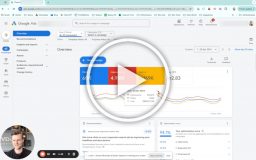


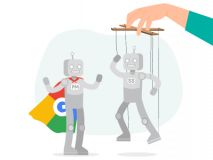

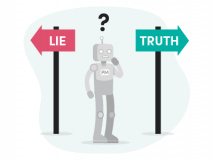
5 thoughts on “26 Advanced Google Ads Mistakes Most Ecommerce Advertisers Make”
Epic post, Andrew. Several really helpful tips for any ecommmerce account. Thanks.
Excellent. Happy to help!
Phenomenal post thank you Andrew! You took one for the team on this one and as someone new to the Google side of media buying, it certainly helped heaps!
Also enjoyed reading about your journey starting Savvy Revenue and how choosing to niche down was one of the best choices you ever made.
Think we are slowly moving towards a more niche focused world where large bespoke agencies are replaced by specialists that can be handpicked based on a business needs.
Kind of how we choose our media consumption now
Thanks again and have a great day.
Thanks, Brendin! Appreciate.
This is one of the best Google Ads peace of text I’ve seen in 2020!